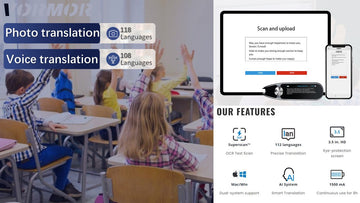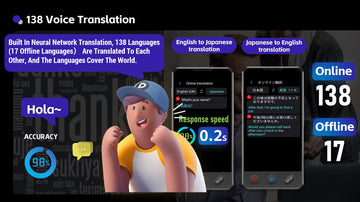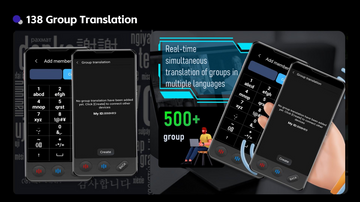Dyslexia, also known as dyslexia.
Before the 1960s, children like this in the United States were also educated as disabled children. However, what puzzled teachers was that these children had very normal intelligence, even surpassing normal people. Why is there nothing to do with the simplest reading? Now the research on it in western countries is getting more and more fruitful. If you search Dyslexia on GOOGLE, you will find up to 23 million results. There are only 40,000 entries for "dyslexia". Children in English-speaking countries have reading difficulties as high as 10%-30%. Among children learning Chinese, about 5%-15% suffer from dyslexia. So this is a very important issue. Many children who we used to think were "stupid" may not be stupid at all, or even geniuses, but no teachers and parents know how to educate them, which delays the children. I hope this article can attract everyone's attention. When your child's grades are not good, first check whether he may be suffering from dyslexia. Annoying phonemes It is now known that the brains of dyslexics are different from normal people, so they process language less efficiently. Dysreaders especially have difficulty processing the units of language - phonemes. A phoneme is the smallest unit of language. For example: The word cat is composed of three phonemes: kuh, aah, tuh. English has forty-four phonemes. Most people can automatically disassemble words into phonemes without the intervention of conscious thought. Just as we can disassemble words without thinking, pinyin is an automatic process when we talk. Cat is one syllable, but made up of three distinct sounds. Most children start to recognize that words are made up of phonemes between the ages of four and six.
Annoying phonemes
It is now known that the brains of dyslexics are different from normal people, so they process language less efficiently. Dysreaders especially have difficulty processing the units of language - phonemes. A phoneme is the smallest unit of language. For example: The word cat is composed of three phonemes: kuh, aah, tuh. English has forty-four phonemes. Most people can automatically disassemble words into phonemes without the intervention of conscious thought. Just as we can disassemble words without thinking, pinyin is an automatic process when we talk. Cat is one syllable, but made up of three distinct sounds. Most children start to recognize that words are made up of phonemes between the ages of four and six.
Difficulty processing phonemes
Because dyslexic readers cannot decode words, they also have difficulty extracting information about a word. They are easily confused by words with similar pronunciations, for example: Volcano (volcano) and tornado (tornado). Delinquents may call it tornado to a picture with a volcano (volcano) on it, but if they are asked to define it, they will be confused. The reader can correctly answer that it will erupt and spew hot lava. In other words, the dyslexic knew what the thing was, but couldn't match the object with the correct name.
Do dyslexics read backwards when reading?
A Myth About Dyslexia
common misconception is that children (or adults) with dyslexia read letters or words backwards. According to Shaywitz (D'Arcangelo 1999), dyslexics have no problem transcribing letters or words. They may write some words backwards, but this happens about as often as other children. But if these dyslexic children are asked to read the words they just wrote and turn what they wrote into spoken language, problems will arise. Shaywitz gave an example, a child with dyslexia can correctly transcribe the word ''was'', but if asked what he wrote, the child replied ''saw''. It can be seen that the problem does not lie in vision but "how does the child perceive the words seen on the paper". This again suggests that the brain converts words into speech through a sound-based mechanism (D'Arcangelo, 1999).
Dyslexia is a learning disability. It stems from a lack of ability to decode text and is usually reflected in the ability to process phonology. This decoding ability is not necessarily related to age, other cognitive and academic abilities, nor is it caused by a general developmental or sensory impairment. In addition to reading, dyslexia can affect other language-related abilities, such as writing and spelling.
Often, but not exclusively, dyslexia has the following symptoms:
-
spelling problem
-
Inability to distinguish the sounds that make up words
-
dyslexia
-
There is a discrepancy between the child's ability and actual achievement
-
Difficulty calling things by name
-
Difficulty picking things up in the right order
-
Just as every child is different, there are many different symptoms of dyslexia. Some children with dyslexia may have only one or two symptoms, while others may have many symptoms at the same time.
-
What can VORMOR Do For Dyslexia?
-
Our translation pen can split and translate words sentence by sentence, and has language follow-up and correction functions, which can better help children with dyslexia and the elderly to read and understand

- VORMOR X7 OCR Reader Pen has been widely used in hundreds of schools and educational institutions, and has solved the difficulties encountered in learning and life for many students with speech and reading disabilities. VORMOR is committed to solving communication difficulties and making communication and learning easier

-
To learn more, visit: https://vormor.co/products/vormor-x7-reader-pen
For updates, follow VORMOR on :
Facebook: https://www.facebook.com/profile.php?id=100087854000778
Instagram: https://www.instagram.com/vormor/
YouTube: https://www.youtube.com/@vormor8521
TikTok @vormorai
WhatsApp ID: +86 18820461144





